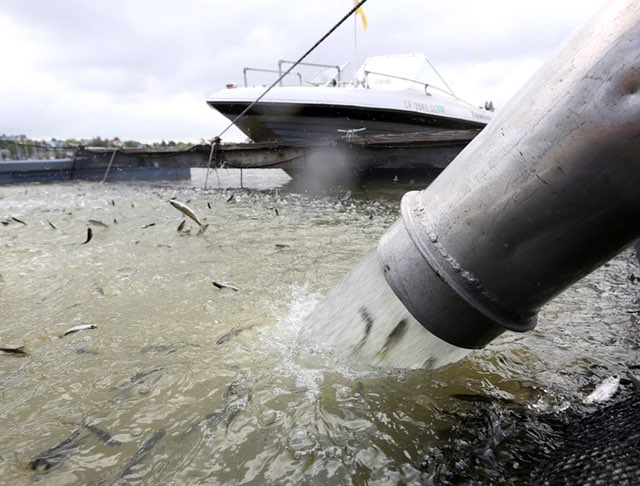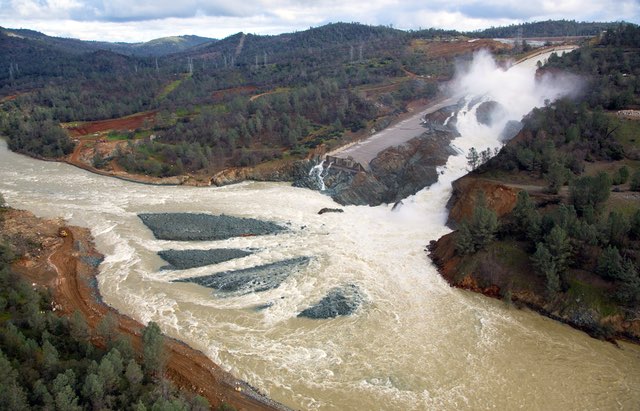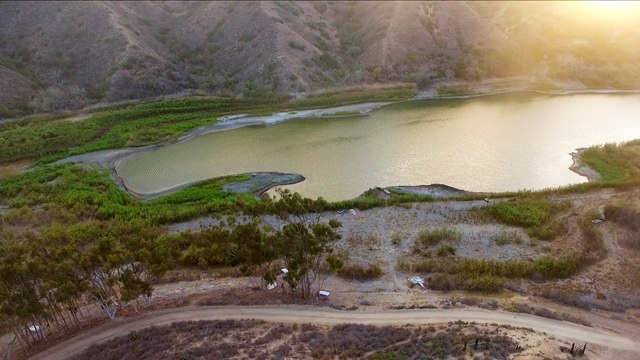From Sportfishing
Fish Report for 5-22-2017

Extinction Looming for Most of California’s Salmon and Trout
5-22-2017
Alastair Bland
Climate change is the single biggest threat to native salmonids in California, according to a new study from California Trout and the University of California, Davis.
CONSERVATION GROUPS, FISHING organizations and biologists have been working tirelessly for decades to protect California’s trout and salmon. They have restored floodplains where juveniles find food and shelter, are arranging to remove obstructive dams from the Klamath River and are constantly badgering water agencies to maintain suitable flows in important spawning streams
But a new report released Tuesday suggests their efforts may be largely for naught. Three-fourths of California’s native species and subspecies of salmonids may be extinct within 100 years, according to biologists at the University of California, Davis, and the watershed advocacy group California Trout. In their study, “State of the Salmonids II: Fish in Hot Water,” the authors warned that climate change impacts and the severe degradation of habitat of wild rivers that continues to this day could extinguish almost half of California’s 32 types of native salmon and trout within 50 years.
Maintaining populations of wild salmon and trout is important since it essentially requires maintaining healthy sources of clean, cold water, which is good for much more than just fish. “Resilient fish populations indicate healthy waters, important for drinking water, agriculture, commerce and the health of people and the environments in which we live,” the report notes. “Declining fish populations indicate degraded waters, which threaten the health and economic well-being of all Californians.”
According to the report, the most threatened of California’s native salmonids are the southern steelhead, the winter-run Sacramento River Chinook salmon and the Central California coho salmon. The bull trout, last seen in California in the McCloud River in 1975, is already locally extinct. The coastal rainbow trout, the biologists said, may be California’s only native salmonid to survive for the long haul in any abundance.
The scientists wrote that agricultural demands for river water, population growth and alteration of the San Francisco Bay and Delta ecosystem are major factors affecting salmonids’ long-term survival odds. Fish hatcheries that boost catchable numbers of salmon and steelhead but dilute native species’ gene pools are also problematic. Wildfires, which are getting bigger and more frequent, also pose a threat to mountain trout populations.
No single stressor, however, is likely to outweigh the broad and devastating impacts of climate change.
“It is the major, overarching anthropogenic threat affecting salmonids in California,” the authors wrote.
River water just a few degrees above a critical threshold can easily kill salmon and trout at any of their life stages, from fertilized egg to spawning adult. This makes rising temperatures especially worrisome. Because mountain snowpack will melt earlier and faster each year under warmer conditions, streams may swell more rapidly to flood stages in the spring, then quickly diminish again in the hot, dry summer months – precisely when certain runs of fish need cold water the most.
Warming trends could also upend wind and current cycles that drive ocean upwelling, which brings nutrients to the surface and provides food for salmon. Even sea level rise, caused by the melting of polar ice caps, will impact salmon by submerging valuable marshland and lagoons where young fish find shelter and food, the report states.
But the authors said there is hope for preserving fish populations. Curtis Knight, executive director of California Trout, said at a press conference Tuesday that restoring mountain meadows could be one effective strategy for keeping spawning streams flowing all year. That’s because meadows can absorb water like giant sponges and release it slowly into creeks through the dry summer months – a service currently provided by summer snowpack but which is threatened by global warming.
The authors also recommended restoring floodplains alongside rivers. Research by California Trout has demonstrated that flooding seasonal cropland in the Sacramento Valley can significantly improve survival rates of juvenile Chinook salmon born far upstream. Inundated floodplains provide young fish with abundant food as well as refuge from predators and deadly irrigation pumps.
Report coauthor Peter Moyle, a biologist with U.C. Davis’s Center for Watershed Sciences, wrote in a foreword to the study that preserving salmon and trout in California will make waves far beyond the state’s own waters.
“[W]hat we Californians do to enhance the resilience of our native fishes is likely to set examples for the rest of the world,” Moyle wrote.
In a statement, Knight said that keeping cold water flowing through a natural stream channel – the basic conditions that trout and salmon need – shouldn’t be a terribly difficult task in California.
“We’re the innovators, the pioneers, one of the most important food-producing regions in the world, and the leaders in technology,” he wrote. “What would the loss of our native fish mean for who we are?”
Author's Endnote: Alastair Bland is a freelance journalist in San Francisco, CA. and can be reached at allybland79@gmail.com.
This article originally appeared on Water Deeply, and you can find the original here. For important news about the California drought, you can sign up to the Water Deeply email list.
Alastair Bland is a freelance journalist in San Francisco, CA. He can be reached at allybland79@gmail.com or via Twitter.
< Previous Report Next Report >
More Reports

3-30-2017
TO UNDERSTAND HOW climate change is creating a world of extremes, look to California, where the reality of severe drought coupled...... Read More

3-13-2017
Walking south along the coast of Catalina Island, the noises of bustling tourists and the crashing Pacific waves quickly give...... Read More

Website Hosting and Design provided by TECK.net